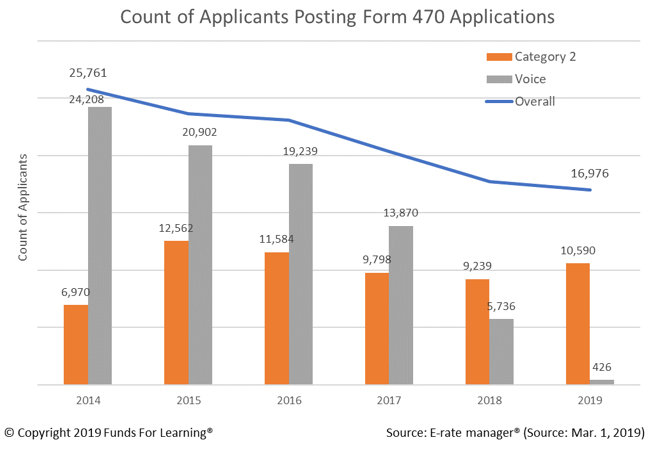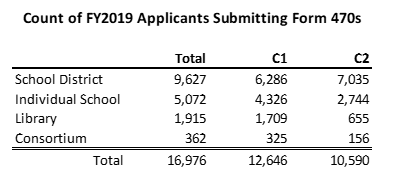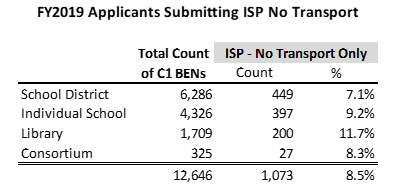The chart below shows the number of applicants who submitted Form 470s each year since funding year 2014, the last year before E-rate Reform. There has been a steady decline in the overall number of participants in the program. This drop aligns with the phase-out of voice telephone service, previously the most widely utilized E-rate support.

From the beginning of the E-rate program, applicants have been required to notify potential vendors of their intent to purchase goods and services. For most of the program’s history, applicants could describe their needs using their own terms and descriptions. However, since the reform of the program, the FCC has required applicants to describe their technology needs using pre-defined “drop-down” menus – and then penalizing applicants who do not pick the correct menu item as defined by the FCC. This has lead to many challenges for applicants, USAC, and the FCC.
Unfortunately, it appears that a significant percentage of applicants may once again be tagged for not using the FCC’s drop-down menus correctly. Reviewing the funding year 2019 Form 470s, a disproportionate number were filed for Internet service that does not include broadband connectivity.


Either there has been a significant increase in the percentage of applicants who do not require transport services; or, a significant percentage of applicants have improperly described their broadband needs according to the FCC regulations.
A list of the Form 470s in question is available for download here.
